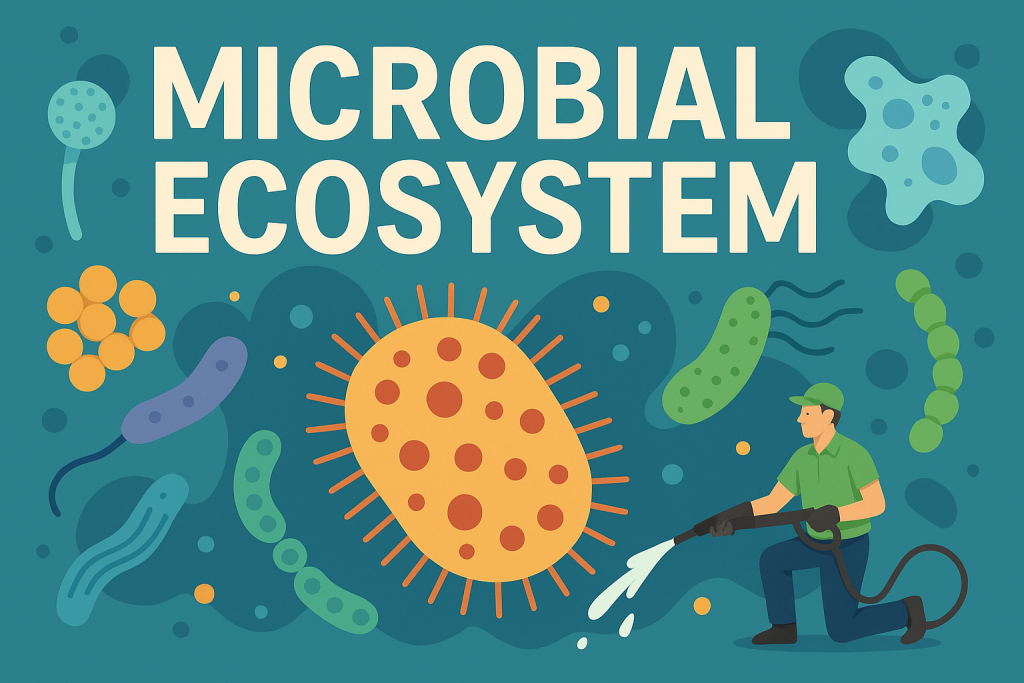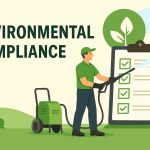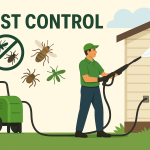When we think of pressure washing and its environmental consequences, most people focus on water waste, chemical runoff, or wildlife disruption. But there’s a hidden side to this story—one that unfolds beneath our feet, in our soil, waterways, and even on building surfaces.
That story is about microbial ecosystems—the trillions of tiny organisms that play vital roles in our environment. From the bacteria that recycle nutrients in soil to the algae that produce oxygen in wetlands, these microorganisms are crucial to ecosystem health. And yes, power washing can disturb them in significant ways. 💧🔬
This article explores how pressure washing, particularly when done without environmental foresight, can disrupt these invisible ecosystems—and what that means for the larger world around us.
🌱 What Are Microbial Ecosystems?
Microbial ecosystems are communities of:
- Bacteria
- Fungi
- Algae
- Protozoa
- Viruses
They live in:
- Soil
- Plant roots
- Tree bark
- Water surfaces
- Concrete pores
- Gutters, roofs, and even urban walls
These microbes perform essential environmental functions:
- Decomposing organic matter
- Recycling nutrients
- Fixing nitrogen in soil
- Filtering pollutants from water
- Breaking down harmful chemicals
- Supporting plant and animal life
Though invisible, they make up the foundation of most ecological processes.
🚿 How Pressure Washing Disrupts Microbial Life
Power washing doesn’t just remove grime—it strips surfaces bare, often along with the delicate communities of microbes living on or just beneath those surfaces.
1. Soil Microbe Disturbance
Runoff from power washing—especially when laden with soaps, bleach, or degreasers—can soak into lawns, garden beds, or surrounding green space. This affects:
- Nitrogen-fixing bacteria
- Mycorrhizal fungi (which help plant roots absorb nutrients)
- Compost microbes and earthworms
🧪 Result: Reduced soil fertility, slowed plant growth, and an imbalanced garden ecosystem.
2. Water Microbe Disruption
Stormwater runoff from pressure washing often ends up in streams, ponds, or lakes. This can:
- Kill plankton and algae at the base of aquatic food chains
- Disrupt microbial filtration of pollutants
- Alter pH levels and oxygen content
- Increase susceptibility to harmful algal blooms
When microbial balance shifts, larger aquatic life like fish, frogs, and birds lose their foundational support.
3. Urban Microbiomes and the Built Environment
Believe it or not, microbial life exists on our buildings, sidewalks, and fences. These urban microbiomes include beneficial algae, fungi, and bacteria that:
- Decompose airborne pollutants
- Inhibit mold growth
- Create protective biofilms that shield materials from erosion
Excessive or high-pressure washing removes these microbes, leaving surfaces sterile—and ironically, more vulnerable to decay and mold regrowth.
🧪 What’s in the Wash Water That Harms Microbes?
Runoff water from pressure washing often contains:
- Bleach (sodium hypochlorite)
- Ammonia or caustic degreasers
- Synthetic surfactants and solvents
- Oils and hydrocarbons
- Heavy metals from painted surfaces
These chemicals:
- Denature microbial proteins
- Break down cell walls
- Disrupt microbial reproduction
- Kill beneficial bacteria alongside targeted grime
Even biodegradable products can upset microbial communities when overused or misapplied. 🌊⚠️
🦠 Why Microbes Matter More Than You Think
When microbial communities are destroyed or weakened, larger environmental problems begin to emerge:
- Soil erosion increases because roots lose microbial support
- Flooding worsens as soil becomes compacted and less absorbent
- Carbon storage declines, accelerating climate change
- Plant disease becomes more common without beneficial microbes to fight pathogens
- Wastewater becomes more toxic as natural filters disappear
In short, microbes may be small, but they’re central to planetary health.
✅ How to Power Wash Without Harming Microbial Ecosystems
Fortunately, there are ways to clean surfaces while minimizing damage to these tiny (but mighty) organisms.
1. Use Soft Wash Methods Where Possible
Soft washing uses low-pressure water with eco-safe detergents. It’s ideal for:
- Wood
- Stucco
- Plants or garden areas
- Urban biofilms that don’t need removal
Soft washing is gentler on microbial life and less likely to strip protective biofilms from surfaces. 🌿
2. Avoid Harsh Chemicals
Skip chlorine bleach, phosphates, and caustic degreasers. Instead, opt for:
- Enzyme-based cleaners
- Plant-derived surfactants
- Diluted vinegar or citric acid solutions (in small amounts)
- Products labeled safe for aquatic life
These options degrade quickly and are less likely to kill beneficial microbes in runoff zones.
3. Contain and Redirect Runoff
Prevent runoff from reaching:
- Lawns
- Gardens
- Storm drains
- Bodies of water
Use berms, gutter blockers, or collection systems. Reclaim systems are excellent for commercial use. This protects both terrestrial and aquatic microbiomes. 💧🛡️
4. Time Your Cleaning Carefully
Avoid pressure washing:
- Just before rain (runoff spreads faster)
- During dry spells when soil microbes are already stressed
- Near blooming plants or active pollinator zones
A little planning goes a long way in keeping microbial communities resilient.
5. Spot Clean Instead of Washing Entire Surfaces
If only part of a sidewalk or deck is stained, clean only the affected area. This reduces the chemical and water exposure to surrounding microbial communities.
🧠 Final Thoughts
Microbes may not be visible, but they’re vital players in the environmental puzzle. Every time you power wash, you’re not just removing dirt—you’re interacting with a living network of microorganisms that support plants, purify water, and protect the ecosystem.
By choosing gentler methods, eco-safe products, and mindful runoff management, you can keep your property looking great without wiping out the microbial workers that keep nature in balance.
Pressure wash with purpose. Clean smarter. Protect the unseen. 🧫💚


